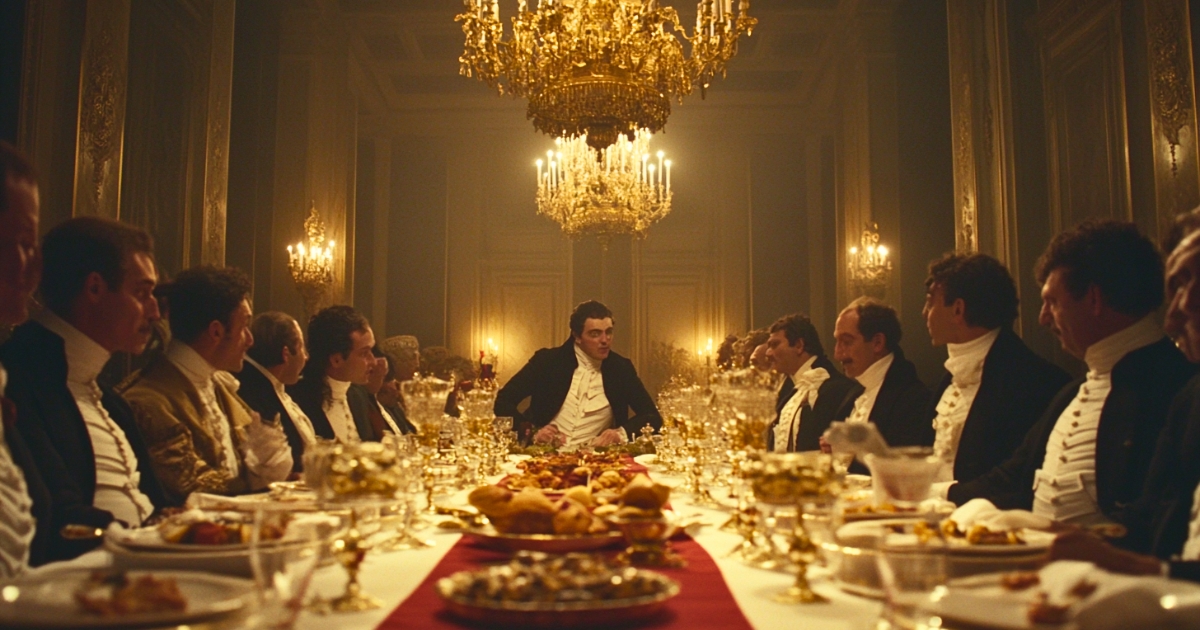In the early 19th century, Napoleon Bonaparte shaped the destiny of Europe. While his military genius and political acumen have been extensively studied, his dietary habits and attitude towards cuisine are less known. However, Napoleon’s dining table was more than just a place for meals; it was a crucial stage for strategizing and conducting diplomacy. This article explores the connection between Napoleon’s eating habits and his military strategy and foreign policy, based on multiple reliable historical sources.

Portrait of Napoleon Bonaparte by Jacques-Louis David
Napoleon’s Eating Habits
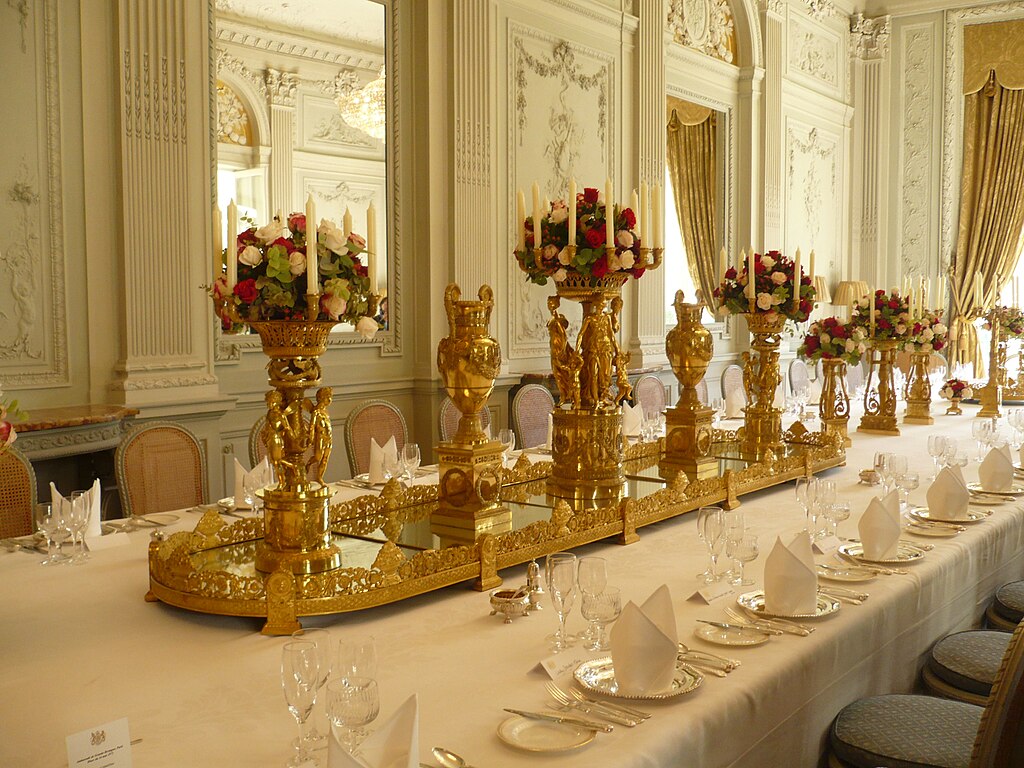
The golden-gleaming dining room at the British Ambassador’s Residence (Hôtel de Charost) in Paris. This photo, taken during the 2010 European Heritage Days, evokes the splendid banquet scenes of the 19th century, as if we’ve time-traveled. Thibault Taillandier, CC BY-SA 3.0, via Wikimedia Commons
Napoleon’s eating habits reflected his personality and lifestyle. He viewed meals more as a means of nutrition than an enjoyment. According to his aides’ memoirs, Napoleon always rushed through his meals, never spending more than 15 minutes at the table.
Several characteristics of his diet are well-documented. Multiple sources agree that he preferred simple dishes, particularly favoring roast chicken and bouillon (meat broth). His Corsican origins also influenced his taste, showing a preference for Mediterranean cuisine.
Interestingly, Napoleon was keen not to waste time during meals. He would often discuss and strategize with his subordinates and close aides while eating. Thus, the dining table was not just a place for meals but also an important venue for strategy meetings.
According to records by Alexandre Dumas de Montmirail, known as Napoleon’s personal chef, the emperor prioritized quantity and speed over quality in his meals. He often said, “Soldiers should eat standing up,” a philosophy reflected in his own eating style.
Cuisine and Strategy on the Battlefield
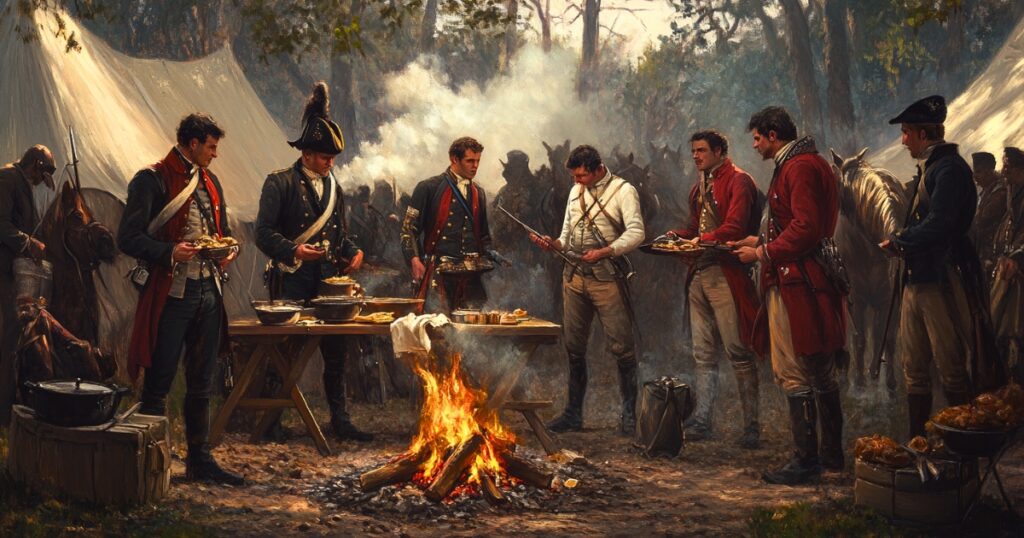
An imaginary scene depicting Napoleon’s officers discussing battle strategies while dining in a military camp. Tents and campfires are visible in the background, illustrating the tension of the battlefield and the daily life of soldiers. AI Generated.
The importance of meals in Napoleon’s military strategy is evident from his actions on the battlefield. His famous quote, “An army marches on its stomach,” was more than just a metaphor.
Napoleon paid meticulous attention to his soldiers’ meals. He believed that adequate food supply was essential for maintaining the army’s morale and combat capability. Therefore, he introduced innovative food supply systems.
For instance, Napoleon introduced mobile bread ovens to improve the army’s food supply, enabling the provision of fresh bread to soldiers. He also established regulations for soldiers’ rations, specifying the quantity and content of daily meals in detail.
The development and introduction of canned food was also a crucial factor in enabling Napoleon’s army to undertake long-term expeditions. In 1795, French inventor Nicolas Appert developed canning technology, and Napoleon recognized its military value. However, canned food only came into widespread use in the army during the later period of Napoleon’s era and after his fall.
Napoleon also paid attention to his own meals on the battlefield. His personal chef would often prepare impromptu dishes using portable cooking equipment. For example, the famous “Chicken Marengo,” hastily prepared for Napoleon after the Battle of Marengo, is still a classic French dish today.
This episode not only demonstrates the creativity of Napoleon’s chefs but also shows that meals on the battlefield held significance beyond mere nutrition. A special dish eaten after a victory served to boost the army’s morale and symbolically celebrate the triumph.
Cuisine as a Diplomatic Tool
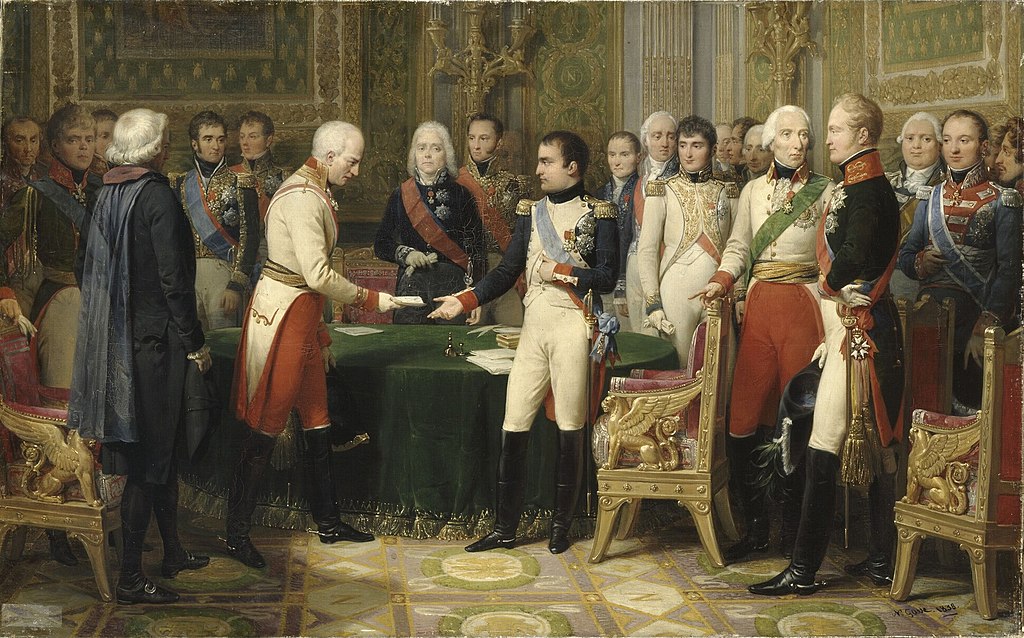
A lavish banquet scene depicting the meeting between Napoleon and the German writer Goethe. The powerful figures probe each other’s intentions, transcending mere cultural exchange. Cuisine becomes a crucial diplomatic tool on the stage of politics and culture.
Napoleon utilized cuisine as an important diplomatic tool. He sought to influence foreign envoys and politicians through lavish banquets. These dinners showcased the superior techniques and richness of French cuisine, demonstrating France’s cultural superiority and national power.
A particularly famous example is the banquet during the Congress of Erfurt in 1808. At this conference, Napoleon met with Russian Tsar Alexander I to confirm the alliance between their countries. Napoleon is said to have overwhelmed the Russian side with the luxury and sophistication of the finest French cuisine.
While the exact menu details have not survived, based on the characteristics of French court cuisine at the time, it’s believed that lavish appetizers, multiple meat dishes, and refined desserts were served. These dishes were not just for enjoyment but also served as a political message, demonstrating France’s wealth and technical prowess.
Napoleon also paid close attention to seating arrangements at meals. The decision of where to seat each guest was an important indicator of that person’s importance and relationship with Napoleon. Through such careful considerations, Napoleon skillfully utilized dining occasions as a diplomatic stage.
The Development of French Cuisine during Napoleon’s Era
Napoleon’s era was also a period of significant development for French cuisine. His conquests provided France with opportunities to encounter various ingredients and cooking methods from different countries. The fusion of these new elements with traditional French cuisine led to the birth of richer and more diverse dishes.
For example, the spices and cooking methods encountered during the Egyptian campaign brought new flavors to French cuisine. The knowledge of pasta dishes gained from the Italian campaign expanded the repertoire of French cuisine.
Furthermore, Napoleon’s court chefs continuously developed new cooking techniques and presentation methods. The contribution of Marie-Antoine Carême was particularly significant. Carême conceived large-scale desserts and decorations with architectural beauty, elevating the artistry of French cuisine.
Carême began his career in the later period of Napoleon’s era and went on to greatly influence subsequent French cuisine. He viewed cooking not just as food preparation but as an art form, pursuing a harmony of visual beauty and taste. Carême’s concept of “Grande Cuisine” (grand cooking) forms the foundation of modern French haute cuisine.
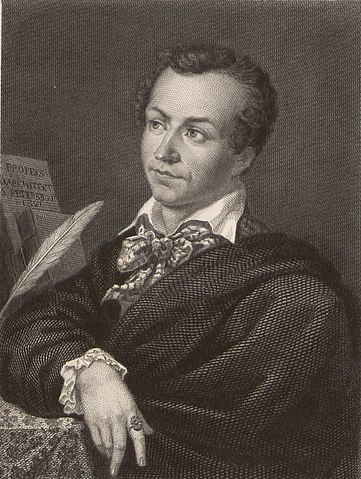
Marie-Antoine Carême (1784-1833), the culinary genius who led the modernization of French cuisine.
Moreover, restaurant culture greatly developed during this period. Before Napoleon’s time, fine dining was mainly enjoyed in the mansions of the nobility, but with the social changes following the French Revolution and the prosperity of Napoleon’s era, ordinary citizens began to enjoy haute cuisine in restaurants.
The Influence After Napoleon’s Fall
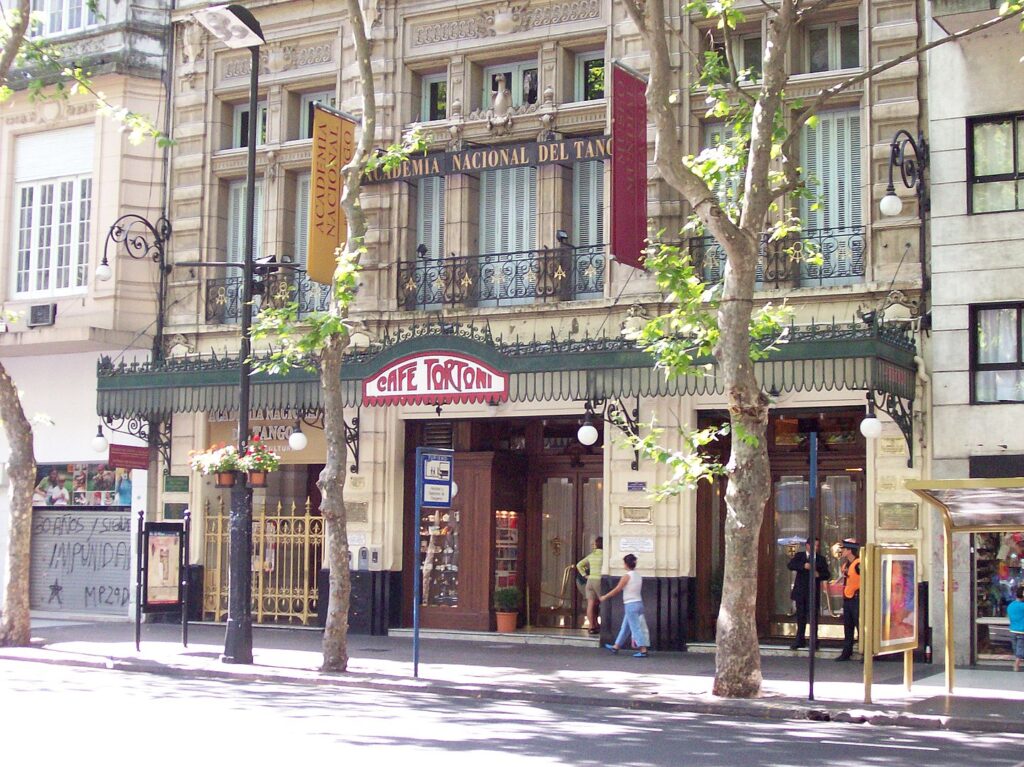
The present-day appearance of Café Tortoni, a prestigious Parisian café. Established in 1798, this café symbolized Parisian café culture after Napoleon’s era. In the 19th century, it became a social hub for cultural figures such as the novelist Stendhal and poet Alfred de Musset, flourishing as one of the centers of French intellectual life. Today, it continues to embody Parisian café culture, carrying on its tradition. Roberto Fiadone is the author of this work, CC BY-SA 3.0, via Wikimedia Commons
Even after Napoleon’s fall, the traditions of French cuisine established during his era continued to thrive. In fact, Napoleon’s downfall led many court chefs to work in Parisian restaurants, providing an opportunity for haute French cuisine to spread to the general public.
In particular, Antonin Carême, Napoleon’s former head chef, had a significant influence on 19th-century French cuisine. Carême systematized French cuisine based on the techniques and knowledge cultivated during Napoleon’s era. His book, “The Art of French Cooking,” became an important text that forms the basis of modern French cuisine.
Carême’s influence extended beyond culinary techniques to elevate the social status of chefs. He viewed cooking as an art form and argued that chefs should be treated as artists rather than mere servants. This perspective greatly influenced the culinary world later, leading to increased social recognition of the chef profession.
Moreover, the new ingredients and cooking methods brought by Napoleon’s expeditions became established in French cuisine throughout the 19th century. For example, the coffee culture encountered during the Egyptian campaign led to the development of café culture in Paris. The numerous cafés lining the streets of Paris today can be seen as an extension of the culture that began in this era.
Furthermore, the restaurant culture that began during Napoleon’s time continued to develop throughout the 19th century. Centered in Paris, high-class restaurants opened one after another, further refining the techniques and artistry of French cuisine. The “Service à la Russe” (Russian-style service) established during this period forms the basis of modern restaurant service.
Napoleon’s Era Legacy in Modern Times
The influence of French cuisine from Napoleon’s era remains in various forms today. For example, the aforementioned “Chicken Marengo” is still a common menu item in French restaurants. Additionally, “Courvoisier,” the brandy said to have been favored by Napoleon, is still known as a premium brandy today.
Furthermore, the concept of “Grande Cuisine” established during Napoleon’s era forms the foundation of modern French haute cuisine. Many elements seen in today’s Michelin-starred restaurants, such as complex cooking methods, luxurious presentation, and strict service order, have their origins in Napoleon’s time.
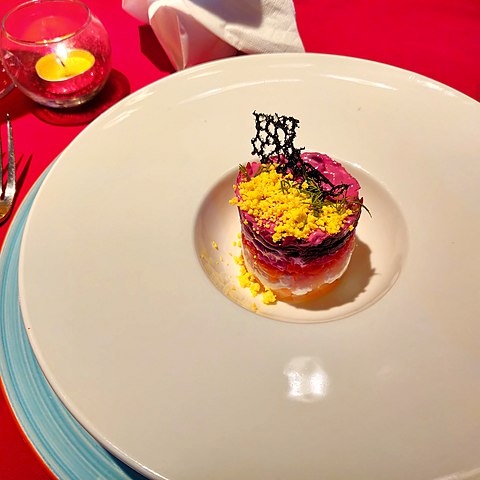
A plate of modern French haute cuisine, artistically presented. Amakuha, CC BY-SA 4.0, via Wikimedia Commons
For instance, the “sauce culture” crucial in modern French cuisine greatly developed during Napoleon’s era. The concept of “mother sauces” systematized by chefs like Carême is still taught as the foundation of French cuisine today.
The canning technology introduced by Napoleon brought about a revolution in food preservation and has had a significant impact on modern dietary life. This technology, born out of military necessity, is now used daily worldwide.
Moreover, the wine classification system that began during Napoleon’s era forms the basis of the current French wine industry. Napoleon implemented wine quality control and classification to ensure stable wine supply to the army. This initiative developed into the current “Appellation d’Origine Contrôlée (AOC)” system.
Conclusion
Napoleon Bonaparte’s dining table was more than just a place for meals. It was a venue for strategizing, a stage for diplomacy, and a means of demonstrating cultural influence. His dietary habits and attitude towards cuisine were closely tied to his military and political strategies.
The traditions of French cuisine established during Napoleon’s era continue to live on, significantly influencing modern French cuisine and food culture. The innovative food supply systems he introduced and the new ingredients and cooking methods brought by his conquests developed French cuisine into a rich and diverse culinary tradition.
Today, we can find the legacy of Napoleon’s era in the French cuisine we enjoy at restaurants and in the canned foods we use in our daily lives. The influence of Napoleon’s time is also strongly present in France’s premium wine culture and café culture.
Furthermore, the “politicization of cuisine” that began in Napoleon’s era – the idea of using cuisine as a tool for diplomacy and politics – continues to influence modern international relations. For example, the dishes served at state dinners still carry important diplomatic messages.
In this way, cuisine was an integral element closely linked to Napoleon’s strategy and diplomacy, and its influence extends to modern food culture and diplomatic culture. Napoleon’s era marked the beginning of the golden age of French cuisine and was also an important period when the political and cultural power of cuisine was recognized.
Much of the rich food culture we enjoy today can be said to have emerged from the innovative efforts of Napoleon and the people of his time, and the challenges they faced. Their legacy has been passed down to modern times not just as culinary techniques and flavors, but as a broader “food culture” that uses meals as a means of communication, cultural expression, and strategic thinking.
This story, which began at Napoleon’s dining table, teaches us that cuisine can be more than just an act of survival – it can be an expression of art, diplomacy, and strategic thinking. The next time we have a meal, we might be able to recall the depth of history and culture embedded in that single dish. This is the power of cuisine that has continued since Napoleon’s era.
Napoleon Bonaparte - Biography, Facts & Death (HISTORY)
Napoleon I - Biography, Achievements, & Facts (Britannica)
Napoleon Bonaparte - World History Encyclopedia
Napoleon Food Facts: Dining with Napoleon Bonaparte
Napoleon at the Table: a Gastronomic Paradox
Grande cuisine - French Gastronomy, Fine Dining & Recipes
Haute cuisine - Wikipedia
